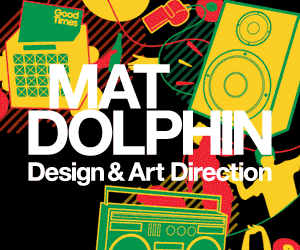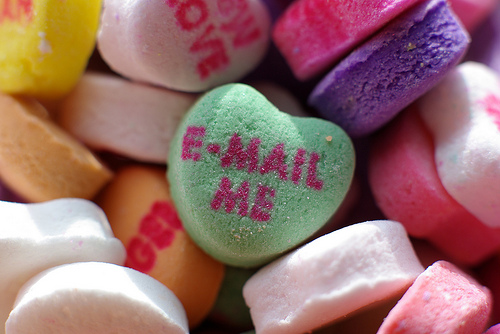Slope Science Fest Turns Five
 Mike |
Mike |  Wednesday, August 24, 2011 at 7:00AM
Wednesday, August 24, 2011 at 7:00AM Lured by the promise of sweet, sweet knowledge, the nerds of Park Slope (and beyond!) lope monthly to darkened caverns watched over by the glassy eyes of stuffed, scientific specimens: Behold! The geeky rites of a clandestine brother/sisterhood: It's called the Secret Science Club -- and it's turning five.
A Union Hall and Bell House institution since 2006, the monthly, booze-infused -- and FREE -- science lecture series is celebrating its birthday with a Kickstarter campaign. You can hear about the Kickstarter push in person, or drop a fiver (or, you know, a quarter-dollar-er, if you've invested heavily in stocks lately) into SSC's new tip jar at their next show, which is TODAY, Aug. 24: Rob Martienssen from Cold Spring Harbor Laboratory will talk about doofing around (not a technical term) with plant genes to make biofuels, super corn, and talking vegetable companions (MAYBE?). It's 8pm at the Bell House (FREE as usual).
Since its inception, the alliterative hosts, Dorian Devins and Margaret Mittelbach, have covered all operating costs for the almost-entirely free series out of pocket. D-ran and Space-Midge, as they by no means gave me permission to call them, fully intend to keep the thing gratis. The main lectures never cost a coin, and the occasional film nights charge only to cover licensing fees. Making money was never part of the plan, Dorian says. In fact, the two share a habit of plunging brain-first into projects without thinking much about finances. "We're the same kind of person. Not great at making money." Only in the last several months did it occur to them to pass a tip jar amongst the data-eaters swarming the events.
"When we started, we thought people might be scared of this stuff, but they'll come if it's free," Dorian says. "We're trying to reach people who aren't already sold on science." Costs gnawing at the host's pockets range from cab fare to get their scientists back home to their labs full of panicking, lonely monkeys to audio equipment.
Really, it's appropriate that SSC will be stealing the funding thunder of so many shitty bands with Kickstarter campaigns -- for years, SSC has brought something refreshing and different to two of the Slope-area's best venues. Personally, I'll say that SSC has stood out if only because there are so many bands -- SO. MANY. BANDS. -- but here is something different: science in a bar? Hmm, maybe I'll check that out.
That unexpected juxtaposition -- beakers next to pint glasses -- likely explains some of the series' oft-surprising popularity. Speakers frequently comment, "Who ARE you people??" when faced with some 400 youngsters, mildly boozing it up amid standing-room only space in the Bell House -- for a weeknight science lecture. The SSC outgrew its initial home in Union Hall's intimate basement room after only a few months. Packed from the start, bouncers soon had to start turning the science-hungry away. The disappointment even once erupted into a fist fight, Margaret revealed -- a rumble enhanced, no doubt, by the Professor Frink voices raised in righteous fury. "The bouncers said, 'The rock shows don't even get like this.'" The regular lectures now routinely fill up the Bell House's much larger Main Event Hall.
That one sci-squirmish aside, the typical SSC crowd offers speakers' an extremely respectful audience. "It's kind of endearing, really," Margaret says. "Generally, during the lecture, you can hear a pin drop." That's to say: people are into it. The SSC crowd is something to witness. It can be charmingly square, as a whole. One of the first times I saw the series at Bell House, the crowd spontaneously lined up, single-file behind the bar in Bell House's Event Hall. Keep in mind, this bar is pretty damn long: there's space enough for 50-or-so drunkards to smash in and all clamor for their drinks at once. It took a few minutes for us all (ok, I was in line, too) to realize we didn't, you know, have to line up. At the last event, a film night, a section of crowd broke out into cheers when the father of quantum physicist, Neils Bohr's, face appeared onscreen. Yeah. There was a Neil's Bohr cheering section.
The Q-and-A session following the speeches is when the SSC crowd really shines, though. Usually, a few die-hards really know the subject. And they will prove to you that the myth of the nasally-voiced science geek is no myth. Most SSC attendees just have a basic, BA-in-sculpture level of science knowledge, though, Margaret says. That's who the lectures mostly cater to. Recognizing that most audience members have a pint of Brooklyn IPA in (at least) one paw, speakers make these lectures a bit more fun than the standard science talk. They also pitch them to a general audience. But they do aim to put your grey matter through the paces a bit, and put out some stuff you probably won't quite get.
SSC started, like so many of the things we Brooklynites do, to sell a book. Margaret, with writing partner Michael Crewdson, penned a tome called "Carnivorous Nights" about the Tasmanian ecosystem. The two held a taxidermy contest to promote their work. Dorian, then host of a (frequently science-themed) radio show on WFMU served as a judge. The contest winner? Andy Templar, who was just about to open Union Hall, a venue whose Masonic Temple-meets-adventurers' club decor -- with book-lined walls and taxidermied specimen -- suspiciously fits his last name. That whole witch's brew turned into the idea for SSC. And the name, Margaret says, was easy. In part because of Union Hall's atmosphere. In part because, "You know, the nerd element. If you were in a science club in high school, you would have maybe wanted to keep it secret."
A few big names have crossed SSC's stage, including Neil Degrasse Tyson, a Daily Show favorite from the Natural History Museum who, Dorian says, always knows how to work a crowd, and neuroscientist Eric Kandel, one of three Nobel-winning SSCers who may or may not have spoken whilst casually polishing their medals. Some of the most memorable speakers brought innovative demos, like NYU computer scientist Chris Bregler who had the crowd rolling around a giant beach ball hooked to motion-capture sensors. That demo got cut short when the ball, inevitably, bounced chandelier-ward in the Bell House space.
Long after their initial book marketing, the secret explorers behind SSC keep going, Margaret says because, "We want to fuel people's desire to learn about science," and, as her partner puts it, "I hope people understand science is part of culture, and that it affects your life in so many ways." The series has generated interest from outside Park Slope's, and even New York's borders. SSC's own popularity might force them to expand. If so, they probably won't figure out the finances first. So, keep your hands out of the tip jar.
 events
events 






